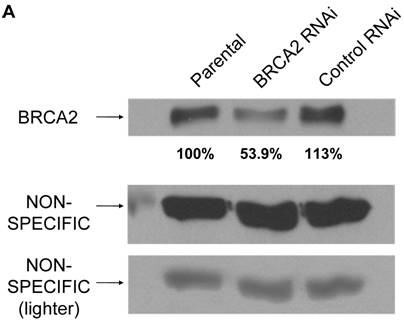
Here are some troubleshooting hints that we have gathered regarding non-specific bands after PCR reactions:
Non-optimal Mg++ concentration
Nucleotide concentration is too high or unbalanced
DNA contamination / carryover
Primer annealing temperature is too low
Mispriming caused by secondary structure of template, snapback, or excessive homology at 3' ends of primers
Primers are degraded or sequence is not optimal
Primer concentration is too high
Cycle number is too high
Incorrect template to enzyme ratio
Non-optimal Mg++ concentration
Suggestion: Titrate magnesium concentration using our PCR Optimization Kit.
Nucleotide concentration is too high or unbalanced
The standard concentration is 20-200 µM of each nucleotide Suggestions:
Check the concentration of stock solutions of all nucleotides
Double check the final concentrations of all nucleotides
DNA contamination / carry-over
Suggestions:
Test for carryover by performing PCR without adding target DNA.
Avoid carryover
To prevent carryover, good lab practices should be used such as:
Physically isolating PCR preps and products
Autoclaving solutions, tips, and tubes
Aliquoting reagents to minimize repeated sampling (no more than 20 reactions per aliquote)
Eliminating aerosols by using positive displacement pipettes
Premixing reagents
Adding DNA to reaction last
Choosing (+) and (-) controls carefully
Soaking gel box and combs in 1M HCl to depurinate DNA
Using new razor blades to exise bands
Using new razor blades to exise bands
Covering UV box with fresh plastic wrap
Always using oil overlay
To eliminate contamination / carryover:
UV irradiation: Mix all components, except template DNA, irradiate in clear 0.5 ml polypropylene tubes in direct contact with glass transilluminator (254 and 300 nm UV bulbs) for 5 minutes
UNG Digestion: Incorporate d-UTP nucleotides into reaction and do subsequent uracyl DNA glycosylase digestion
Primer annealing temperature is too low
Primer annealing temperature is typically 50-60°C (may be higher or lower based on primer sequence and buffer components).
Suggestion: Determine Tm/annealing temperature based on one of the following equations:
If primers are 20-35 bases If primers are 14 - 70 bases
Tp = 22 + 1.46(Ln)
Ln = 2(# G or C) + (# A or T)
TP = Effective annealing
temperature ± 2 - 5 Tm = 81.5 + 16.6 (log10 [J+]) + 0.41
(% G + C) - (600/l) - 0.063
(% Formamide) + 3 to 12
[J+] = concentration of Monovalent cations
l = length of oligo
Mispriming caused by secondary structure of template, snapback, or excessive homology at 3' ends of primers
Suggestions:
Increase initial denaturation temperature to 95-97°C
Denature DNA minus enzyme & buffer for 4-6 minutes
Increase cycling denaturation time 15-30 seconds
Try "Hot Start" technique
Add T4 Gene 32 protein 3-5 µl/ml
When designing primers, make sure there is no more than 2 bases of homology at the 3' end. Use a primer design program if available
Consider addition of cosolvent to reaction buffer:
3-15% DMSO
1-10% Formamide
5-15% Polyethylene glycol
10-15% glycerol
Primers are degraded or sequence is not optimal
Primers should have same number A & T's versus G & C's, and they should be at least 14 bases for specificity. Suggestions:
If primers are short and A-T rich, add 0.9 - 2.0%(v/v) DMSO
If primers are G-C rich, add 1-10% (v/v) Formamide
Double check priming sequence, use primer design program if available
Check aliquot of primers on a gel to ensure they are not degraded
Primer concentration is too high
Suggestion: Adjust the primer concentration (0.1 - 1.0 µM of each primer is optimal)
Cycle number is too high
Most templates require 25-30 cycles. Suggestion: Cycle number should be based on starting concentration of template DNA.
If the number of target molecules in your sample is...
Then we recommend the following number of Cycles...
3 x 105 25-30
1.5 x 104 30-35
1.0 x 103 35-40
50 40-45
Incorrect template to enzyme ratio
The necessary amount of template varies from reaction to reaction. As a guideline, 100 - 750 ng human DNA (105 - 106 copies) per 100 µl reaction. The amount of enzyme should be optimized for each template. Suggestions:
Titrate the amount of template in the reaction
Perform optimization experiment varying enzyme concentration by 0.50 increments in suggested range (0.5 to 5.0 units)


No comments:
Post a Comment